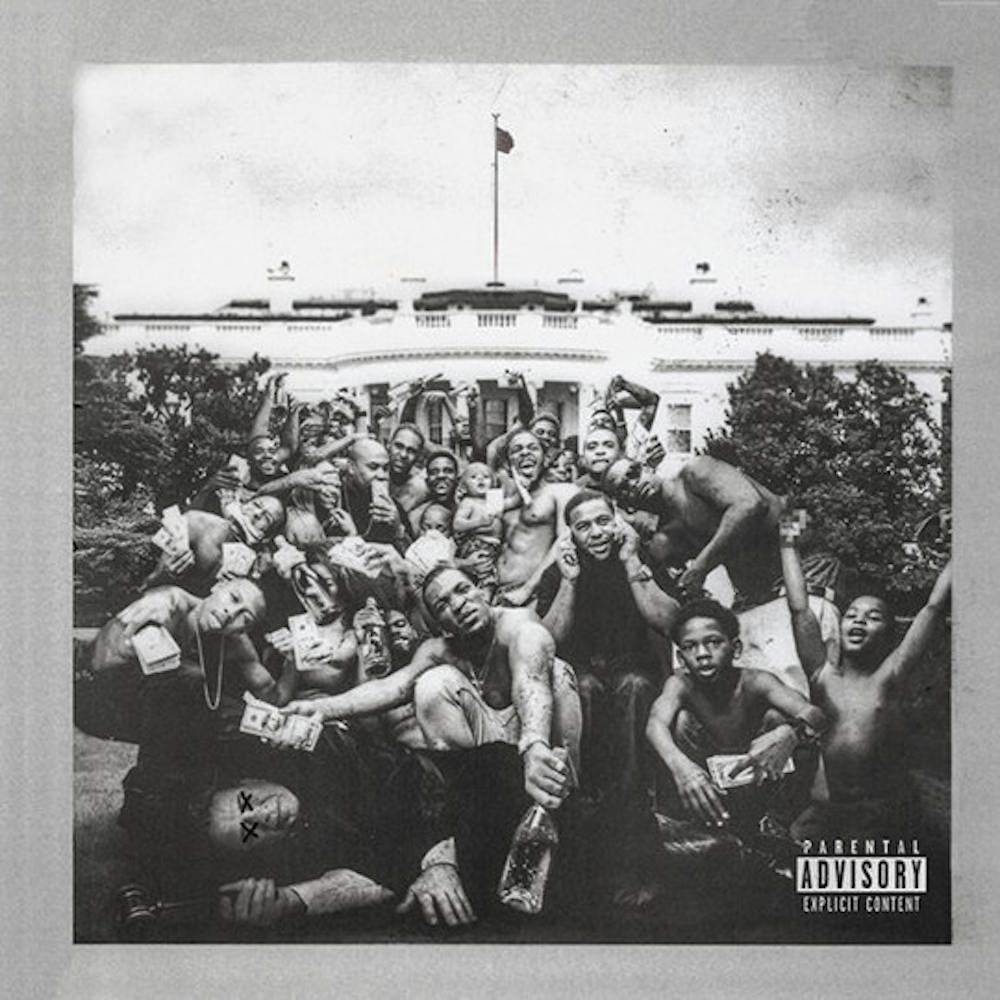"Radius" by Allen Stone
Lauren
Allen Stone’s name was brought into the light for rhythm and blues lovers alike through his soulful exploration of the superficial lives of Americans in “Radius.” With sultry, slow tracks like “I Know That I Wasn’t Right” and “Barbwire” that showcase Stone’s falsetto and more
"To Pimp a Butterfly" by Kendrick Lamar
Sam Breazeale
Kendrick Lamar’s 2012 album “good kid, m.A.A.d City” was a concept album of sorts, following Lamar’s adolescent exploits in Compton and juxtaposing them against Lamar’s perspective as an adult. Well-received by both audiences and critics, “good kid, m.A.A.d City” left much anticipation for its 2015 sequel, whose themes were timely given the current political climate.
Lamar’s new album, “To Pimp A Butterfly,” could not have been more relevant, addressing what is perhaps the most urgent moral issue facing the United States at the moment — the undervaluing of black lives — but doing so through beautifully complex narratives, distortion and redefinition of familiar cultural symbols, and profanely personal accounts of Lamar’s own experiences. Combining his old voice with a new boldness, Lamar uses jazz and soul music along with modern beats to create an angry, but fresh, feel. The album is often innovative without feeling gimmicky, such as in the song “Mortal Man,” which includes the sound of Lamar “interviewing” Tupac Shakur (using an old interview record), or in “King Kunta,” which explores how the black body has been exploited far into the past, using the image of Kunta Kinte from the 1976 book, “Roots.”
While discussion of white privilege, police brutality, and institutional racism is by no means new, 2015 has been the year that many acknowledged, for the first time, that black lives in America are often treated like they don’t matter. No longer can anyone seriously deny that the country has not recovered from its more overt racism of the past, and this made it the perfect year for “To Pimp A Butterfly.”
"Sound and Color" by Alabama Shakes
Rachel Minetti
After hearing the band’s first four-song EP in late 2011, I knew Alabama Shakes was doing something special. I listened to their 2012 full release "Boys and Girls" on constant repeat until I was finally able to see them live at the end of 2013. Lead singer and guitarist Brittany Howard’s strong presence and brilliantly soulful vocals are something one cannot easily forget.
Songs such as “Hold On” and “You Ain’t Alone” captured avid music listener’s ears across the world and earned Alabama Shakes airplay on alternative music stations.
While I could have easily gone on forever listening to their southern rock and 60’s soul influenced songs, when “Don’t Wanna Fight” dropped this past February — a solid three years after "Boys and Girls" was released — I knew it was going to be a long two months until their second album, "
The album’s other two singles, released consecutively two weeks after one another, maintained the high expectations I had for them. “Gimme All Your Love,” a slower, sultry and soulful four-minute song made its debut when the band performed on Saturday Night Live — and has remained one of my favorite songs since. “Future People” switches things up as it features a heavy bass drop throughout the chorus, but still rings true to the band’s blues rock roots.
The rest of "Sound and Color" was everything I could possibly want from Alabama Shakes’ sophomore release. While still sticking with the southern rock and soulful rhythms of "Boys and Girls," the band stayed relevant and refreshing, rather than repetitive and unoriginal.
"Beauty Behind the Madness" by The Weeknd
Sarah Morse
In the summer of 2015, singer and songwriter Abel Tesfaye, also known by his stage name The Weeknd, released his second studio album “Beauty Behind the Madness.” Released on Aug.
"Girls in Peacetime Want to Dance" by Belle and Sebastian
Rachel Pittman
Five years after its album “Belle and Sebastian Write About Love,” indie pop band Belle and Sebastian finally premiered another musical masterpiece with the 2015 album “Girls in Peacetime Want to Dance.”
The 12-song album, released in January of this year, is a dreamer’s delight with more than an hour of peppy beats and imaginative lyrics.
“Girls in Peacetime Want to Dance” marks a shift from the Scottish band’s moodier, more ethereal tracks of the past to a new, upbeat sound of music made to inspire dancing.
However, with the new sound, Belle and Sebastian did not lose its relatable lyrics or realistic elements. The new tracks still exhibit the depth of the band with
With their 2015 album, Belle and Sebastian seamlessly gave its music an electronic, dance, Pet Shop Boys-
Listen to “Girls in Peacetime Want to Dance” for a bright, energetic reinvention of a band whose music always finds the perfect balance between whimsical sounds and melancholy emotions.

